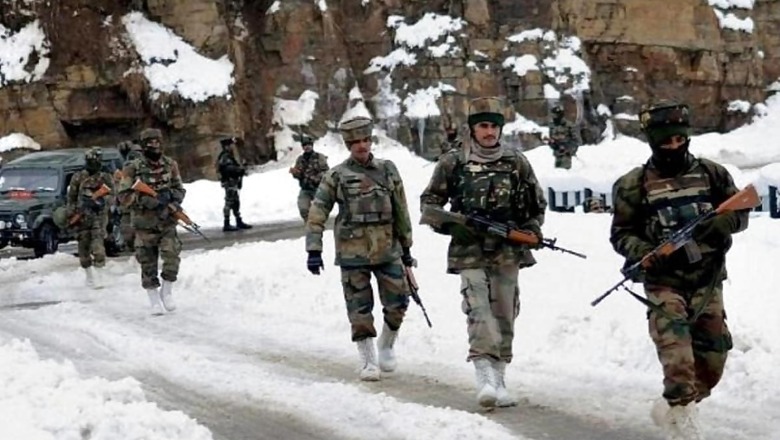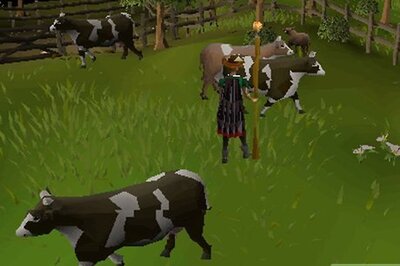
views
While the armies of India and China are still in the process of trying to resolve tensions at the Line of Actual Control (LAC) through dialogue, Chinese forces on the intervening night of August 29 and 30 reportedly tried to transgress into the Indian side in a bid to capture the dominating heights on the southern bank of the Pangong Tso.
Since 20 Indian soldiers died in a face-off in Galwan Valley on June 15, many rounds of brigade commander-level talks have been held to resolve the dispute between the two countries. However, the latest attempt by the Chinese forces to open a new front has brought fresh tension in the eastern Ladakh region.
The Ministry of External Affairs (MEA) on Tuesday said the Chinese army ?engaged in provocative action? on August 31 even as commanders from both sides were engaged in discussions to de-escalate the situation on the southern bank of Pangong Lake.
To understand why the latest ingress by the People?s Liberation Army (PLA) into Indian territory has led to fears of a military escalation on the LAC, we may try to place the site of the latest clash between the two forces. Given the level of mistrust between the two armies, both are trying to capture the commanding heights in areas claimed by both countries. This intent is likely to have triggered the clash on the night of August 29-30.
Sources said the latest incident happened near the Indian Army?s Thakung forward base, which is quite close to the Chinese camp of Yula, near which the PLA has stationed its light and heavy tanks. Thakung is located near the bottom of ?V? at the southern tip of the Pangong Tso. The earlier clashes between the two forces that happened in Gogra and Depsang areas are located on the northern side of the lake.
According to various reports, the Indian Army has a relatively thinner presence in the north, where it has only been conducting patrolling duty. In the south, where both the Army and ITBP have a strong presence, the PLA could not meet with any success. Around 200 PLA soldiers are said to have been spotted through radars and night vision equipment as they were trying to set up camps and move further into the Indian territory.
Reports suggest that the Indian Army managed to not just pre-empt and thwart the attempt of the PLA but move faster than the Chinese and occupy heights that are claimed by both the countries. However, according to some reports, the PLA is said to have also moved in on a hill called Helmet Top and tried to capture another hill called Black Top. To prevent further Chinese incursions, additional Indian troops have been posted at Rezang La and Reqin La in the Chushul area, where the Army has also moved a regiment of its T90 tanks. Rezang La is where the 13 Kumaon battalion led by Major Shaitan Singh had fought against the Chinese forces in 1962.
Armies of both the countries are eyeing the heights in the southern bank of the Pangong Tso lake, which is located at an altitude of 14,000 feet, because it gives the armies an easy view of the movement of troops on the other side and gives them a chance to block vital supplies to the forward army posts. On the northern bank of the lake, while Chinese troops have withdrawn from Galwan Valley where clashes took place on June 15, they are still deployed in large numbers in areas like Gogra post, in the finger area along the lake, as well as in the Depsang area where the PLA has reportedly been blocking access to Indian forces to carry out their patrol duties as they did before June.
The Indian Army, through a statement, has said that it ?pre-empted this PLA activity on the Southern Bank of Pangong Tso Lake, undertook measures to strengthen our positions and thwart Chinese intentions to unilaterally change facts on ground.” The statement is in tune with the statement made a week ago, by the Chief of Defence Staff General Bipin Rawat who had asserted that India has ?military options? to deal with China if the military and diplomatic-level talks did not produce results.
The PLA’s Western Theatre Command, on the other hand, has accused India of “illegally crossing the line” on August 31 at two points – the south bank of Pangong Lake and near Rezang La. The statement said India had ?blatantly provoked and caused tension on the border” and had “undermined the consensus reached” at the diplomatic and military talks. Despite a number of talks held between senior army officials from both sides, the PLA has been pushing for a massive military build-up along the LAC, which includes construction of new heliports and surface-to-air missiles sites.



















Comments
0 comment